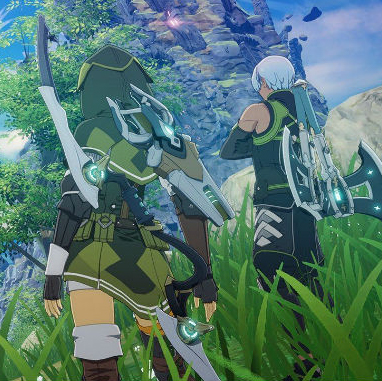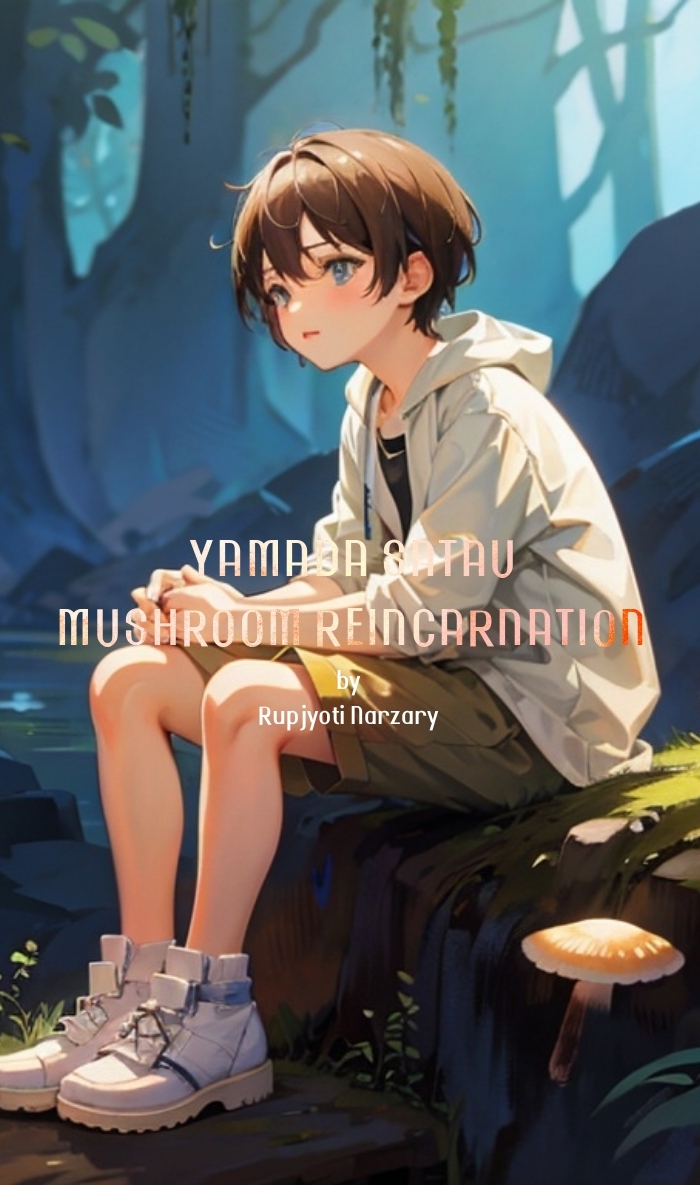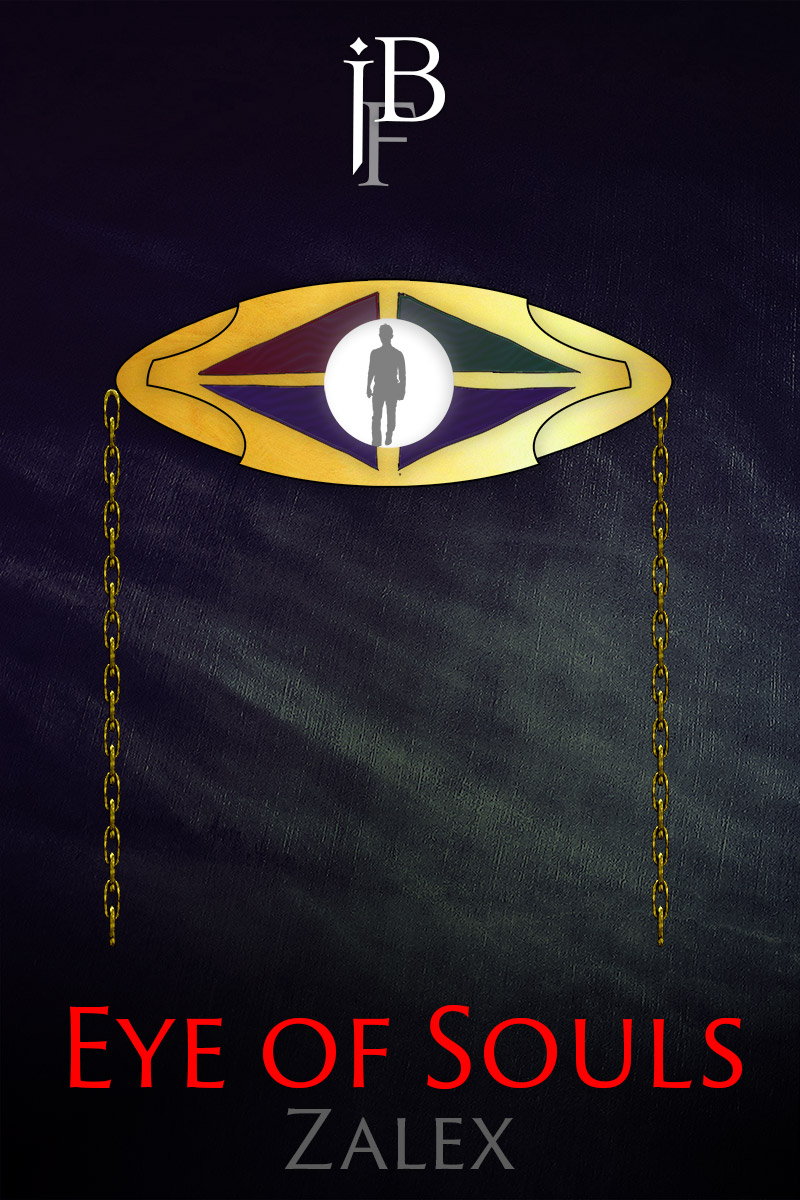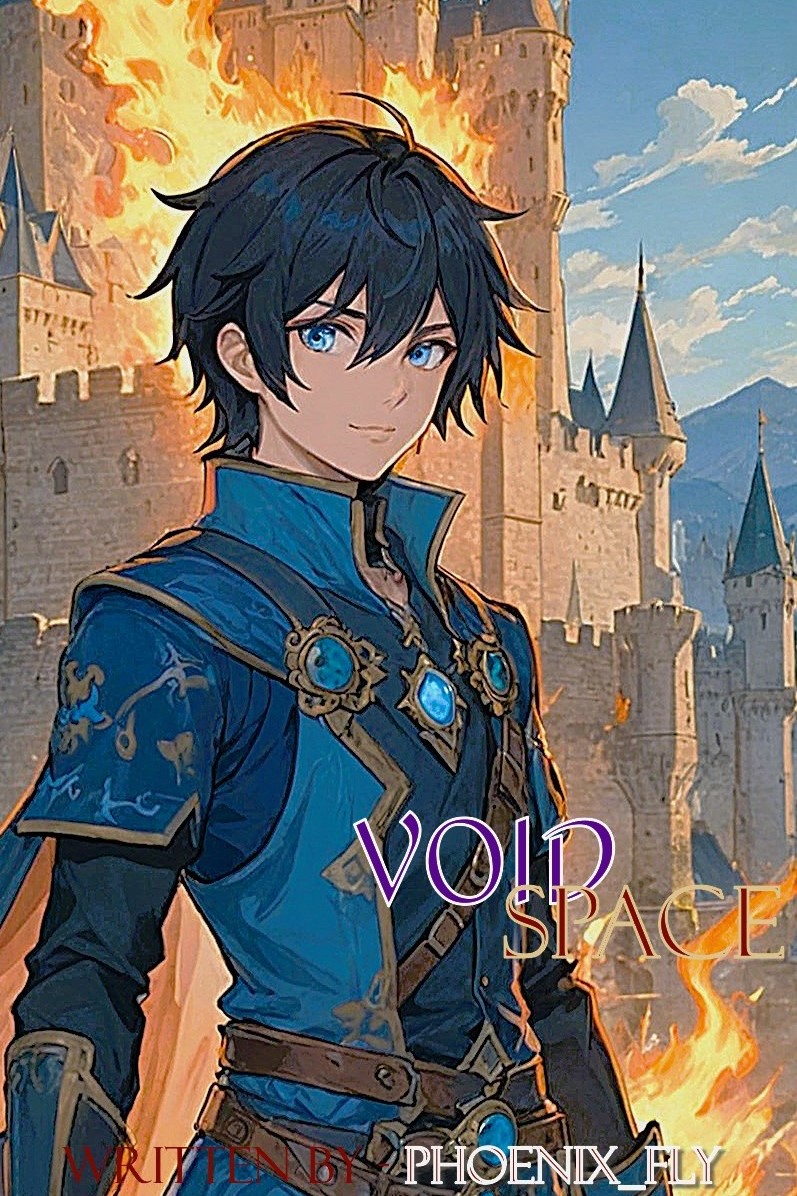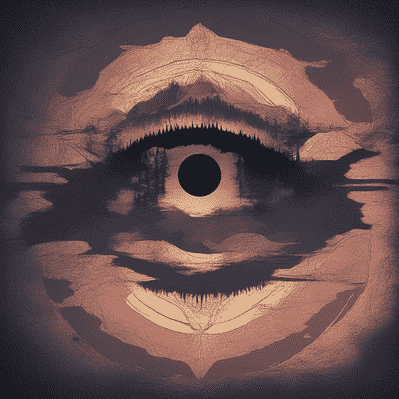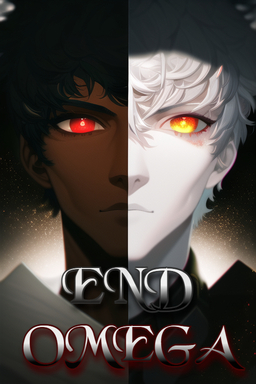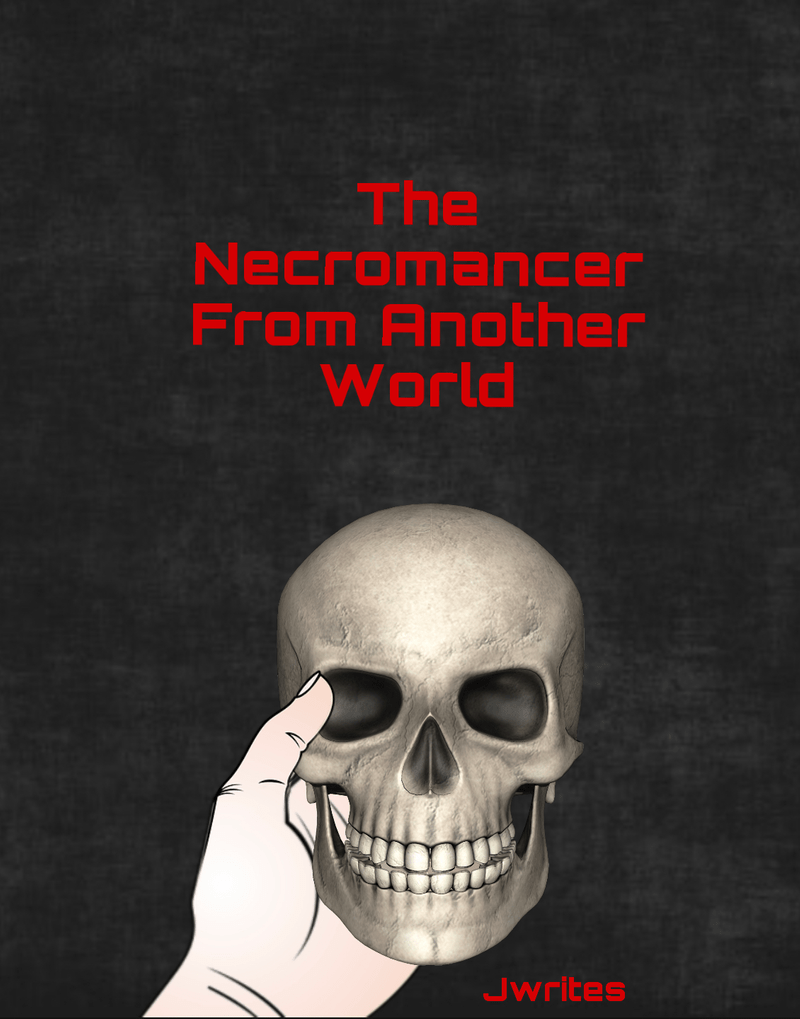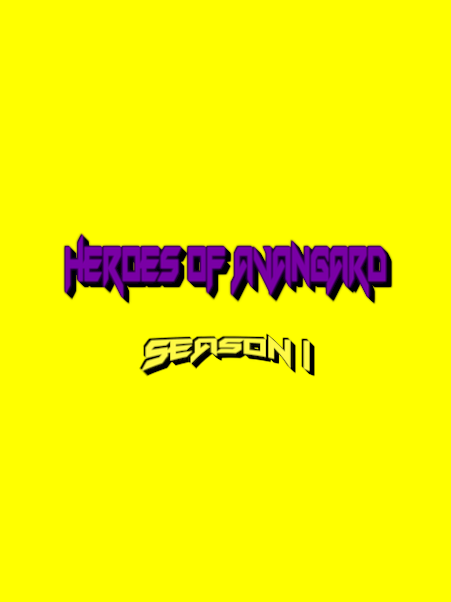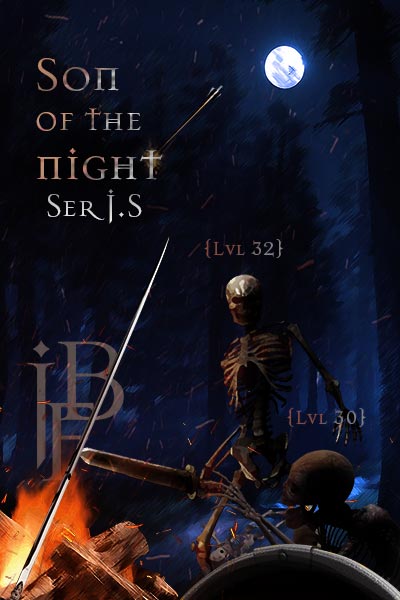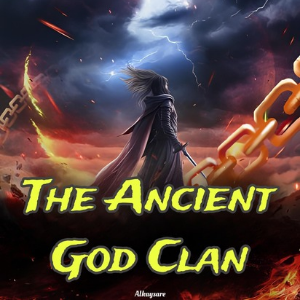This document is attuned to what the reader has learned thus far. Updated version will appear at the end of future volumes as new details are revealed in-story. However, some details are difficult to explain during the narrative, and so there is a small amount of new information here, or at least clearer explanations. Generally, if I am revealing something new here, it’s because I don’t think I will have a chance to explain it in-story. Think of it like reading a foreign novel where the author doesn’t take the time during the text to explain terms like ‘Dantian’ or ‘Samsara’ because they are well known to his home readers, so the translator explains them to you.
Bruxilan (Bruxilhu) Language:
A number of the terms used by characters in Sword of the King, even when speaking English, are from Bruxilan, the language of science and ancient literature in the Multiworld.
The Bruxe, the original owners of this language are, rather like the Romans, long gone, but their language, like Latin, has survived in continued use to this day. To a certain extent, it also functions as an interworld trade language, although the strength of the Dominion of Parha has led to a second language, English, supplanting it somewhat in some places.
In the glossary, all Bruxilan nouns are shown in their forms as Collective / Particular / Genitive. These forms can be thought of (sort of) as Plural/Singular/Possessive, although linguistically those terms aren’t entirely correct.
Bruxilan lacks pronouns, except a few highly specialized ones, so dialog translated from it tends to sound odd to English ears. It is largely in passive voice, and demonstrative subjects such as ‘ths one’, ‘one’, ‘that one’, etc. are used heavily to stand in for I, you, he, etc.
Note that Old Parhan, Alyrhian, Gireidil and Ilidi are all referred to as dialects of Bruxilan by people in the Multiworld (because a long time ago, they were), but they are no longer mutually intelligible with each other or with proper Bruxilan, so they are really descendant languages.
Spiritual Arts
In the multiworld, people treat spiritual and religious matters separately.
Religious refers to matters beyond the reach of scientific study, just as Earthers do, but the reach of human study has not been as limited for the Multiworld civilization as it has been on Earth.
Because of that fact, Spiritual is not a synonym for religious, but refers to factual knowledge of the soul, which is to say, that branch of Science that relates to the soul. The reason they treat this subject as science is that they confirmed the existence of the soul and learned the means to study and interact with it a very long time ago.
Such a development, naturally, changed the nature of how it was perceived. Earth science treats this subject as religion or superstition for the simple reason that they lack this scientific evidence.
Spiritual Arts thus refers to practical actions involving the soul. Spiritual Science refers to the study of the soul.
Spiritual Arts Glossary
Flux Sense – The ability of the immaterial mind to develop a parallel to physical senses that perceives the flux signature of matter (see ‘Flux’ in the Flux Arts glossary). Extends far more easily to particles having the same spin as the mind’s current physical vessel (brain). Thus, perception is normally within the current world. Sensing into other worlds is far more difficult, but necessary for navigating between worlds. Flux sense tends to develop in imitation of one physical sense, but occasionally an artist might develop a second imitation (being able to both ‘see’ and ‘touch’, for example. Most living minds ‘smell/taste’, less common is ‘hearing’, then ‘seeing’, then ‘touching’. Rogan actually has a very limited sense of ‘hearing’ in addition to his powerful ‘touch’.)
Yashi / Yashin / Yashil – Literally ‘Gate’. Points in the human body which serve as connections between the material world of the body and the immaterial world of the soul. For an untrained person, these connections are only tenuous, barely enough to maintain contact between the two. The theory behind Gates is different, but many of the positions are the same as the ‘Chakras’ of Eastern religions.
– Osen – Literally ‘the origin’. Usually the first gate to develop, during gestation. The yashin within the pelvis. Although the position isn’t quite identified identically, it is comparable to the chakra called ‘Muladhara’ in Hindi.
– Adhen – Literally the ‘awareness’ or ‘consciousness’. The gate which is the primary conduit of decision-making and perception. It is in the skull, behind and somewhat above the eyes, and corresponds roughly to the ‘Ajna’. Note that there is no ‘Crown’ yashin at the top of the head in this story, so this is the top-most gate.
– Hitochin – Literally ‘the middle hand’. The yashin which is the primary conduit of action and emotion. It opens to the exact center of the spirit. Located along the spinal column next to the heart. Also called the ‘Heart Gate’, and comparable to the chakra ‘Anahata’. Seryahd use it as the anchor point for their Ijinstone.
– Tantochin – Literally ‘the right hand’. The yashin located with the right palm which is the most skilled at manipulation and force delivery for a right-handed individual. There is no primary chakra corresponding to it, (or the other limbs) but systems often place secondary chakras in the hands and feet.
– Jadtochin – Literally ‘the left hand’. The parallel to the Tantochin for a left-handed individual. For a right-hander, the off-hand yashin which is difficult to cultivate. (Obviously, for a lefty, the Tantochin becomes this, and the Jadtochin takes over the function of the right-handers Tantochin.)
– Tanjhagain – Literally ‘the right foot.’ Relates to stability and mobility in right-handers. As the off-foot, is used to enhance and expand these.
– Jadjhagain – Literally ‘the left foot.’ Relates to stability and mobility in left-handers. As the off-foot, is used to enhance and expand these.
Note that there are additional Yashin, not yet mentioned in the text.
Rhyui / Rhyuin / Rhyuil – ‘Soul’. The immaterial part of the mind. That which cannot be identified with chemical interactions of the physical nervous system.
Se / Sen / Sel – ‘Spirit’. The portion of the Rhyuin located in the material world, anchored to the brain and body. It is the first part of the Rhyuin to grow, so it is often likened to the roots of a plant which grows through the gates into the immaterial world. For a normal soul, the death of the body allows the Sen to detach from the material world and finish entering the immaterial world. Everything that happens beyond this point is a question of religious belief.
Junsai – A martial art school based spiritual arts training. Rogan’s sister-in-law, Fionna’s grandmother, is a Junsai master. Simkit, Fionna and Meadhbh are all her students.
Realm – Refers to the state of mastery of a spiritual arts practitioner. Different schools have different systems of describing levels, but they tend to be similar. In Junsai, they are numbered. A non-practitioner simply develops their spirit by happenstance and has no defined realm. In the Junsai system that Simkit briefly referred to, one becomes a practitioner of the first realm as soon as one gains a degree of purposeful control of one’s spiritual capacity.
Flux Arts
Flux is neither matter nor electromagnetism, but an extra-material existence not resonant with the stable levels known as Worlds (the individual stratums of the Multiworld, of which Earth is only one of a very great number.) In contrast, material substance (matter and electromagnetism) possesses particles and therefore spin (which see) and therefore exists in resonance with the given world (level) defined by that spin.
Flux Arts refers to the sensation and manipulation of flux.
Flux Physics is, as it implies, simply the component of physics relating to the study of flux.
Flux Artist Classes:
Keth-ethe / Keth-ethen / Keth-ethil – Literally, ‘Those that use tools’. The most common flux artist class. Specializes in the selection and control of pre-built tools. Differs from a non-flux-artist because the Keth-ethen has the ability to provide (channel) the flux used by an unpowered tool. A non-flux-artist can only use self-powered tools.
Natural – A flux user who naturally manipulates flux. Does so by permanently internalizing the patterns in their soul. This is an inborn, exceedingly rare class. Spiritual Arts schools and sects, which often have the goal of achieving physical immortality, usually have as a related goal developing a personal state of development resembling Naturalhood. A side effect of being a natural is that the Sen, the portion of the soul resident in the physical world as an extension through the gates is too well anchored and cannot let go. Thus, Iji (the souls in the Ijinstones living within Seryahd) are dead Naturals.
Seryahd / Seryahdin / Seryahdil – A flux user class defined by the Ijinstone they carry, to which the soul of a dead Natural is bound. The Natural receives spiritual energy from the Seryahdin, who in turn receives access to some of the skills of the Natural (now called an Ijin), in addition to its help as a partner.
Maryahd / Maryahdin / Maryahdil – A flux user class defined by the ability to work with living creatures and spirits, as well as advanced healing arts. Typically utilize special totems refined from the preserved spirits of dead animals, called Une.
Incharyahdin – Another flux user class. Mentioned, not yet described.
Tei-incha’en – A flux user who specializes in creating temporary flux patterns on the fly as they use them.
Flux Arts Terminology
Une / Unen / Unil – The spirit of an animal, normally bound to a totem made from a relic of its dead body. Simple flux patterns are integrated with the spirit, which uses its spiritual body to channel the flux required to manifest the desired flux form. Une can be extremely high function, to the point of exceeding the mental or physical capacities of their original living forms. Normally a technique of the Maryahd.
Ged / Gedin / Gedil – Similar to a Unen, a Gedin is bound directly to the Maryahdin, giving him or her the ability to extend mental capacity (usually in a way shaped by the nature of the original creature). Maryahd will normally also use their Gedin to control their Une, as its integrated abilities will include the tools to refine and communicate with them.
Specter – A animated manifestation of Flux, under control of a spirit. In this story, mostly seen as the Une that Nam uses, some of which turn into specters resembling the animal spirits’ origins. Her favorites are Mord the giant dog and Ooe the dove.
Sifash – A command often used to dispel or deactivate flux forms, especially items that are intended to be easily turned off.
Flux-flame – A high-energy direct manifestation of flux resembling flames or plasma. The light given off by flux-flame is often of a frequency characteristic to the person channeling it. It is easy for human minds to channel, but thus far nobody has found a way to build tools that can channel it. Flux-flame tends to exert force much more than a comparable instance of physical flame, thus has perceptible ‘weight’. Flux-flame also has density and can be used to deflect things and make barriers.
Iji / Ijin / Ijil – The spirt of a dead Natural. The flux artist class known as Naturals are unable to let go of material existence and become drifting spirits which can become dangerous. The Ijil solution is to bind them to tiny stones called Ijinstones (Arrhir-Iji) and implant those in especially strong Keth-Ethe called Seryahd.
Flux-form – A construction of flux defined by the information it carries rather than flux-flame or flux-matter. Technically all three are just flux, but it is easier for the human mind to think of them as separate things, defined according to the results of their particular natures.
Tracker – A flux-form used by Cipolli as a means to track or spy on something. Creating and using these is extremely high-end and rare flux-arts.
Pattern – The inscription containing the means to create a flux form. The ‘substance carrying it’ can mean a very wide variety of things, so this is a highly generic term. A flux pattern is the essential ‘circuitry’ behind all flux manipulation, so it can be thought of as the parallel to an electronic circuit.
Rhyu’cha’e / Rhyu’cha’en / Rhyu’cha’il – A style of gate seal used by the character Payton. The only one seen so far is on her right palm gate, and creates a temporary flux shield.
Incha’e / Incha’en / Incha’il – Literally ‘written path’. See ‘Pattern’.
Flux-matter – A high-mass manifestation of flux with characteristics like solid matter.
Flux sense – See definition under spiritual arts.
Flux barrier – Any form of flux usage intended as a shield. Non-specific term.
Flux wall – A simple barrier of the ‘Kinetic’ type (c.f.)
Kinetic Wave – Do NOT confuse with kinetic energy. This usage comes from the original meaning ‘relating to motion’ rather than the physics term ‘Kinetic Energy’ which also derives from that meaning. A manifestation of flux imparting motion upon matter or electromagnetic waves in or passing through its location. Depending upon how it is implemented, Kinetic forms can appear to be science-fiction-style ‘forcefields’ or ‘tractor/pressor beams’. They do not violate Newton’s laws of motion; the person/thing ‘anchoring’ the kinetic form will receive the forces interacting with it.
Cloak – A flux form that shields a thing from perception, usually flux perception. Also called ‘Stealth’.
Stealth – See cloak
Kinetic Charge – An implementation of Kinetic Wave flux. Used with projectiles. Upon disruption, multiplies the energy delivery of the weapon. Due to its design, the multiplier acts upon the projectile rather than the person firing the weapon. The normal means of accomplishing this is to redirect the energy in opposing directions at right angles to the path of delivery. Otherwise, the projectile would actually rebound backwards at the shooter.
Wright / Wrought – archaic English verb repurposed by Parhan flux artists to refer to the act of inscribing a pattern.
Flux Light – A variation on Flux-matter. A manifestation of flux largely existing for the purpose of emit light, but often used as a medium for temporary flux patterns.
Flux Scan – An artificial method of sensing at a distance. Different than Flux sense in its mechanics, because it passes a diffuse field of flux over an area to collect data.
Active scan – An extension of flux sense. Flux artists capable of ‘sight’ can also magnify distant objects with their perception to sense them beyond the range that natural comes to them. The normal flux sense is referred to by ‘Sight’ type flux artists as ‘passive scan’ while purposeful concentrating on a region is called ‘active scan’. The drawback is that they are sending their awareness out rather than taking in what comes to them, so it can be perceived by the thing being scanned if it is sensitive to it.
Kinetic Field – a specific application of kinetic waves (c.f.) in a ‘force field’ form.
General Glossary
.44 Special – Jack’s back-up weapon. Smith & Wesson .44 caliber ‘Special’ is a heavy, slow round favored by policemen as a back-up weapon. It has a short range of accuracy but very high stopping power.
9mm Parabellum – One of the most common handgun rounds on Earth, and also, apparently, throughout the Multiworld. In Parha, it is called ‘9mm Browning’.
Ahu! – A word in Alyrhian that Nam uses to summon Mord. Probably something like ‘Come here’.
Ain Giraan – Gireidil term. Literally, the ‘Association of the Gireid’. A coordinating organization between clans, run by the traveling juror-scholars that mediated law and conflict between clans. Modeled on the associations which adminstered provinces and cities on Chald. The Paeth Giraan operates as a integrated function of Ain Giraan.
Beretta – An Italian arms manufacturer. In this book, it refers to the M9, a 9mm semi-automatic handgun designed by said company and used by the US military and American police officers.
Bore – a measure of gun barrels and ammunition. Also called ‘gauge’. Works in inverse: the larger the number, the smaller the barrel. A 1-bore ball of lead would weight a pound, a 2-bore would weigh half a pound, and so on. Now used on Earth only for shotgun sizes, but used in Parha for all ammunition.
CAP – Crimes Against Persons. A crime investigation unit involving assault, homicide, kidnapping and other crimes involving direct effect on the victim, as opposed to crimes against property, vice crimes, etc.
Centurion – A high-level non-commissioned officer of the Parhan military (similar to a Sergeant-Major). The rank is used in the Civil Guard to refer to a senior police officer similar to a US police lieutenant.
Dhan – Gireidil term. The person to whom a clan directs its absolute loyalty. The Dhan also feels this loyalty to the clan, as he/she is a member, so it is, in effect, mutual. Only the bond between husband and wife or parent and child can rival it. (In fact, these are called the ‘three loyalties’ by the Gireid. They can only come into conflict with each other. They override all other affinities in the Gireidil heart.)
Dhanryo – Gireidil term. Joanna translates it as ‘my lady’ or ‘my lord’, but it actually translates as ‘Our Chieftain/Leader’.
DSN – Police slang in some police departments. ‘Department Service Number’. A way to refer to police jobs. A reference to the serial number on their shield (badge).
Fen – A Jhisari garment similar to a ‘Tube Top’. Essentially a wide peice of cloth wrapped around the upper body.
Flying Frame – A single-person aircraft similar to a kite or hang-glider, which is used in conjunction either with personal flux abilities or flux tools for propulsion.
Gao – A Jhisari garment. A quilted silk full-body robe worn in colder climates.
Guardsman – the Parhan term for a police officer.
HUD – Heads-Up Display, a see-thru display projected onto or in front of the windshield of a vehicle so that the occupants do not have to take their eyes off of the outside view.
Hikul – An Alwarzi term. A a person without Ilidi ancestry. Mentioned as meaning ’empty’, or the opposite of having ‘the blood’.
Isura’an – Gireidil formal female garment. Vaguely reminiscent of the sari, formed by wrapping long strips of translucent cloth in multiple layers.
Kriojjin – A Gireidil residential fortress (meant to contain military and noble families).
League – a measure of distance, taken to mean the distance one can walk in an hour. In the UK, it is defined as three UK miles. It has no official definition in the US, but many other countries have had ‘leagues’ of various lengths with their own definitions. (Interestingly, there is a definition of exactly four kilometers as a ‘general metric’ league given in Wikipedia, but I don’t know if there really is an SI unit definied. I doubt it, actually.) The ‘league’ that is used in the story is the Parhan Herith, and is defined as the distance the Parhan Army is expected to march in an hour. The Parhans apparently expect their soldiers to step to it, because it equals about 3.6 miles or 5.6 kilometers (which would be doable, but fairly brisk as a marching pace.)
Neith – Parhans measure speed in leagues per hour, but instead of naming the unit in the length per time format like other such units, they gave it a name of its own.
Ondakjai – Alwarzi term. Literally ‘Fighting Slave Girl’. Joanna is secretly one of these, controlled by Benjamin.
Prina – A Jhisari garment similar to a sarong skirt. Used with the Fen.
M9 – see Beretta
Mini-Unit – Hand-held electronics giving the police officer both radio and computer network access away from the police vehicle. Referred to as such because the vehicle and its built-in electronics are known as a ‘unit’.
MP – Military Police
MPD – Municipal Police Department (as in St. Louis MPD)
NTE – Non-Typical Entity. Government term for ‘Spook’
Paeth Giraan – Literally, ‘The Utilities of the Gireid’) A multiworld communications network created by the Gireid people. Gireid automatically receive a mental connection early in life, generally in infancy.
Rugit – a Chaldan wild animal related to the goat
Sasfa manarh! – An invective expression that will not be translated.
Shield – Police terminology for what most civilians call a policeman’s ‘badge’.
Slave Stone – A flux device being used by Benjamin to enslave girls. Causes pain and even directly controls actions. Unclear at this time how it works. Joanna and Das Ria both have slave stones. Joanna’s is controlled by Benjamin, while Das Ria’s was taken over by the Ilidi Judge she calls ‘Master’, who claims to be trying to find a way to free her from it.
Spin – The act of spinning or tranferring. Also, can be used describe the specific level status of a particle of matter or electromagnetism.
Spinning – Also called Transference. Moving between levels (worlds) in the Multi-world. The fundamental particles of matter have ‘spins’ along three axes at particular frequencies. Changing any of these three from one stable frequency to another will result in shifting to a different world.
Spook – The catch-all term on Earth for unexplained persons or creatures that have been appearing on an increasing basis for at least ten years.
Stone – (mentioned because American readers probably don’t know how much a stone is). In the UK, it is 14 pounds or 6.35 kg. However, when Parhans use it, it is closer to 14.11 pounds, being 16 Parhan pounds (and it an unofficial, customary unit invented by English-speaking immigrants. Parhans set up their system around multiples of twelve, not sixteen. The nearest official unit is the ‘gallonweight’ which is 12 Parhan pounds, or roughly the weight of 4.8 liters or one Parhan gallon of water.)
Tasuithan Pile – A heavy cloth with ballistic properties (like Kevlar) which is apparently popular on Utsuirin, and appears to be the material used to make the T’hana.
T’hana – Ilidi term. Jhisari battle dress. Described by an Earther as robes including a veil and a hood and “somehow combined the appearance of a Middle Easterner and a Ninja to become a martial interpretation of Arabic attire.”
Trohthoan – Gireidil term. Translated as ‘Attendant’. A person who substitutes for the spouse at official functions requiring his/her presence. Generally done for either nobles or high-level officials.
Utichit Ilidi – Ilidi term meaning ‘People of Ilidi’. The largely defunct species-wide association that directed the Ilidi side of the Great War.
Warbeast – An artificial lifeform (the flux arts parallel to a robot) created as a weapon. Created during the long war between the Gireidil and Ilidi camps, used by both sides. Chald was overrun by these, leading to the abandonment of that world.
White Hat – A reference to the classic “Western” genre trope. Police slang for a ‘Spook’ who appears to be acting as a vigilante against other spooks, as if defending Earthers from them.
Cultures and Species Glossary
Alwarzi – a tribe of Ilidi / Osril hybrids who act as a race, but are somewhat loyal to their Ilidi ancestors. The culture of Benjamin, Joanna, and possibly Sandra’s parent culture as well.
Alyrhian – The culture that Nam grew up in. She described herself as growing up in a jungle in primitive conditions, but nothing else has been shown at this time. Nam’s cave-girl chic outfit is often noted by others (correctly) as appearing Alyrhian.
Gireid / Gireidin / Gireidil – The species which Rogan, Nam and Meadbh are either pure or hybrid members of. Gireid are typically very tall (Nam, at around 5’6″, is extraordinarily short) and most have pale eyes and otherwise very dark coloration, with features resembling Northern Indian and Pakistani ethnics.
Ilidi – The term is Ilidi dialect, not Bruxilan, so it does not receive the same inflections. (The Bruxilan is Ilid/Ilidin/Ilidil). The species of the Master(Judge/Father). The opponents to the Gireid in the Great War. The offworld ancestors of the Alwarzi and Jhisari. Ilidi are the tallest of the off-world species (The Judge’s 210 cm height is simply on the tall side of average) and tend to Caucasian features and lighter colors. The Alwarzi hold them in very high regard in theory, but in fact are not respectful of their most dearly-held principal, Duty.
Intr’ith – Rogan’s Gireidil clan. He is the Dhan, but the meager remains of the clan are largely treated as an auxiliary of the Parhan noble House of Brath. The two were allies because the founding ancestor of Brath House was a member by marriage of Intr’ith.
Jhisari – a second group of Ilidi/Osril hybrids. They consider themselves a tribe, but organize like a Spiritual Arts sect. The culture of Das Ria and Ele Amis.
Mato’khra – The Gireidil clan led by Joanna.
Osri / Osrin / Osril – H*** Sapiens, the native humanity of Earth. The other species mentioned so far are all believed to be descended from Osri, but are possibly descendants of some relative like Neanderthal.
Parhans – Citizens of the home country of the former Empire and current Dominion of Parha. Sometimes used by extension for citizens of other parts of the Dominion as well, although it isn’t technically correct. Adopted culture of Rogan, Nam and Meadhbh.
Tasuithan – Not yet described. The people of a world which exports military hardware.
Thamad / Thamadin / Thamadil – Simkit’s species. A human species that was engineered by the Ilidi in ancient times into a centaur species. They have somewhat East Asian facial features, and almost horse bodies. They differ in articulation in the legs, being able to move them in ways that a horse cannot, more resembling human movements. They have horselike hooves and tails but do not have manes.
Vuzhrid / Vuzhridin / Vuzhridil – The extinct bipedal human species which were the ancestors of the Thamad and other engineered species. They were wholly enslaved by the Ilidi and eventually driven to extinction.
Kelsie – The word “Kelsie” is probably related to the ancient Greek term ‘Keltoi’, referring to a Celtic-type people that lived in the Danube valley. The early Kelsies were a mixture of immigrants from various Celtic-type cultures into Trin, but most of these were wiped out in the global disasters known as the Troubles. The majority of Kelsies today are descendants of Lowland Scots and Irish descent. The remainder of their ancestry is other immigrants, going all the way back to the Keltoi themselves.
Sassenach – The portion of the Kelsie population that speaks a descendant of Scots and Irish English.
Gaelig – The portion of the Kelsie population that speaks a form of Irish, or Gaelic.
Anglic – The English speaking culture in the Capital Region of Parha. Although not the only English speaking population on Trin, they are a significant portion of it.
Old Parhans – Also, ‘Paralho’ (their own term for themselves). The original ethnic of Parha. Responsible for conquering more than half of Trin and a couple dozen other worlds, but drastically reduced in population in the Troubles. Their descendants are spread all over. Their ancient ancestors were indigenous North Americans who migrated to Trin over three thousand years ago. They may have the same ancestors as the Mississippians and their modern descendants, but mostly assimilated Multiworld culture and the Bruxilan language.
Coloniaise – Another immigrant population. A people of mixed French and Iberian ancestry. They speak a patois of various French and Iberian dialects.
Ezoese – Another immigrant population. A people of Japanese descent.
Han – Another immigrant population. A people of Chinese descent


